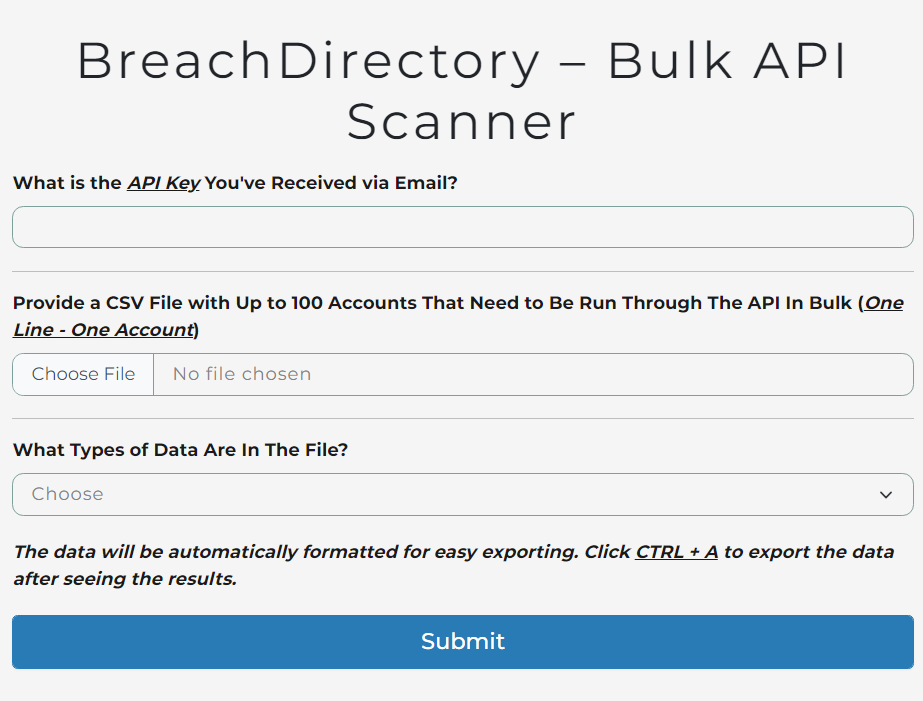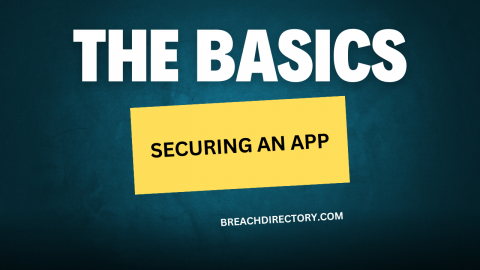In the wake of recent news, knowledge of securing both your database and your application is more and more beneficial. In this short blog, we’ll walk you through the things you should know when securing your application.
Consider Your Use Case
The first thing you should walk yourself through before securing any application is the use case of your application. What’s your application used for?
Once you answer that question, you will attain a decent understanding of what you need to build to make your application tick, and when building your software appliance, you will be well-equipped to secure it because you will have an idea of where people could attack it from.
Securing Your Application
You now know how your application is used – great! Time to secure it. Here’s what to look at:
- Returning user input. You surely have some of those. Try to avoid returning user input to the user – that’s the basis of XSS attacks. Attacks are the reason why databases appear in data breach search engines.
- Acting on user input. Avoid passing user input straight to a database or anywhere else – if you do that, your application will be susceptible to SQL injection attacks. SQL injection attacks are the #1 attack vector.
- Keep your registration and login forms safe. That means that you should log out users who are no longer using your application, use strong password restrictions (only allow users to register if they use passwords of >8 characters in length with uppercase and lowercase passwords), etc. Keeping them safe will help you avoid the broken access control flaw from being introduced into your web application.
- If user logins are not necessary, avoid storing passwords. If you store them, store them securely to avoid cryptographic failures – store your passwords with BCrypt, Blowfish, or other mechanisms – these are resilient to password cracking.
- Update the components your application is using. Using updated software is one of the primary ways to protect yourself and your application from various attacks! Newer versions of software come with security patches and other things, so always keep your app components up to date.
- Ensure that the components you load into your application are loaded with integrity. Load all components that are necessary for your application to use with integrity. That means that you should load CSS and JS files with the integrity attribute to ensure subresource integrity (SRI), and use similar measures to load other files into your application too.
- Log and monitor everything that’s happening in your application and your database. Logging and monitoring things happening in your application will help you prevent or investigate attacks. There are companies that opt to back up all of the logs relevant to their application and database to another server, so if you want an additional security measure, make sure to back up your logs to a secure, remote place so that even if your application gets hacked, you will retain logs of what happened to the app in another server.
Of course, these are only the basic things you should be aware of when building any application – make sure to adhere to security standards like the OWASP Top 10, and you should be good to go. Of course, following this security advice doesn’t mean that your application won’t ever be hacked, but it’s a good start.
Make use of data breach search engines and a data breach API if possible – data breach search engines such as the one provided by BreachDirectory let you be aware of your exposure in data breaches and provide you with the necessary advice to protect yourself from identity theft.
For those searching for a data breach API solution, make sure to explore the bulk searching plan available in the BreachDirectory data breach search engine: this spin of the data breach search engine will provide you with the ability to provide a file containing a lot of accounts for the BreachDirectory data breach search engine to check if they’re at risk. All at once!
Upload your file containing accounts you need to check if they’re at risk to GitHub, then use the BreachDirectory data breach API in accordance to the documentation, and you should be good to go!
The BreachDirectory data breach API even has a nice UI to go along with it:

Fortify your application security using the tips above, then put the BreachDirectory data breach search engine API to the test!
Aside from that, don‘t forget that no application is 100% secure; security can always be made better –nothing guarantees 100% security from data breaches as there are numerous areas attackers can employ to harm your application. Attacks also include social engineering, so it‘s a good idea to be wary and educate your staff on the harm of social engineering, spear phishing, and other attacks on top of educating them.
We hope that you‘ve enjoyed this blog and it helped you fortify the security of your application – make use of the BreachDirectory data breach search engine to fortify the security of your orginization, and until next time.
Frequently Asked Questions
How to Quickly Secure a Web Application?
Follow the security guidelines outlined in the OWASP Top 10 and you should be good to go! Of course, don’t forget that there are other mediums attackers can use to harm your application too.
Why Should I Use a Data Breach Scanner?
Using a data breach search engine helps you and your company ensure you won’t fall victim to identity theft attacks. By scanning through hundreds of data breaches, data breach search engines are able to tell you whether your account is at risk of identity theft or not.
What is a Data Breach API?
A data breach API is an API appliance that facilitates the search through data breaches. Such API appliances are similar to the BreachDirectory API – after you provide an account or a list of accounts, a data breach API will scan through the data breaches in the system and provide you with a result set.
What Should I Be Aware of When Securing An Application?
Be aware of the types of attacks malicious users will use to harm your application as well as educate yourself on social engineering, spear phishing, and attacks that can harm your company internally (through unrelated people or employees) as well.
